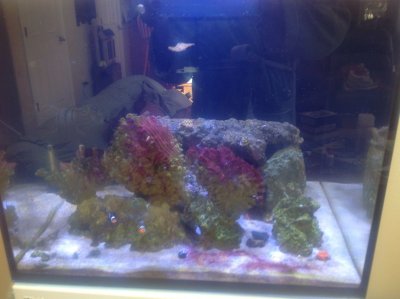I have a Red Sea reefer 170 that has 43 gal. Including sump. The tank has been in operation for 3 months and all elements appear steady, no ammonia, 5ppm nitrate, .5 phosphate, 420 calcium, 6.9 alkalinity, ph 7.9, temp 77, salinity 1.026. The sump has a ATO, protein skimmer, bio block and a small refugium. The display has an estimated 20-25 lbs. of live rock and live sand. Inhabitants are two clowns, two chromis, fire shrimp, 4 RFA's and 4 mushrooms, numerous hermit crabs and snails. There is stringy maroon algae growing on the rock and sand that diminishes at night and returns each day.
I have been treating the tank with 11% weekly water changes using 0 tds water and Red Sea reef pro salt at salinity of 1.026 and have been weekly dosing 15mg fluval alkalinity treatment in an effort to increase the alkalinity to the 8-9 level only to have it fall back to the 6.4-6.9 level every few days. Shouldn't the alkalinity be in the 8-10 level without treatment? Does my setup need modification? Thanks for any suggestions.

I have been treating the tank with 11% weekly water changes using 0 tds water and Red Sea reef pro salt at salinity of 1.026 and have been weekly dosing 15mg fluval alkalinity treatment in an effort to increase the alkalinity to the 8-9 level only to have it fall back to the 6.4-6.9 level every few days. Shouldn't the alkalinity be in the 8-10 level without treatment? Does my setup need modification? Thanks for any suggestions.

















